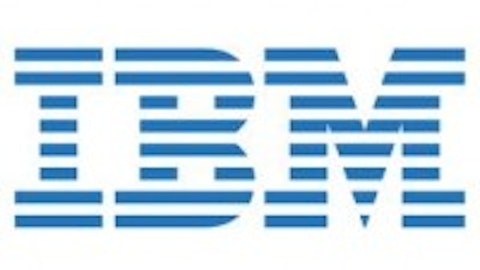The past five years have been exceptionally cruel to the solar industry. Once considered the next hot growth industry, solar companies have been devastated by crises affecting its core markets – the global financial crisis, the European sovereign debt crisis, the slowdown in China and spending cuts in America all dashed hopes of solar power becoming a viable alternative to traditional sources of energy. The Solyndra scandal also showed that green stimulus programs were prone to waste and corruption. As a result, solar power subsidies were steadily reduced across the world, as countries started to pinch pennies to make ends meet.

This rally continues a bullish streak that started with its IPO last December. Since its IPO, SolarCity Corp (NASDAQ:SCTY) has rallied 280%. By comparison, First Solar, Inc. (NASDAQ:FSLR) and SunPower Corporation (NASDAQ:SPWR) have respectively plunged 84% and 77% over the past five years. Is SolarCity Corp (NASDAQ:SCTY)’s success merely due to its late entry to the game, or are there other factors at play?
A niche market
SolarCity Corp (NASDAQ:SCTY) isn’t really a competitor to larger, multinational companies like First Solar, Inc. (NASDAQ:FSLR) or SunPower Corporation (NASDAQ:SPWR). SolarCity doesn’t manufacture solar panels, it only leases and installs them. Therefore, it hasn’t been exposed to the devastating pricing wars that have leveled much of the Chinese solar industry and undercut American companies such as First Solar, Inc. (NASDAQ:FSLR) and SunPower. First Solar recognized the growth potential of this niche installation market five years ago, when it first invested $25 million in SolarCity Corp (NASDAQ:SCTY).
SolarCity also has a limited domestic presence in 14 states, whereas First Solar, Inc. (NASDAQ:FSLR) and SunPower Corporation (NASDAQ:SPWR) have been heavily exposed to European and Asian problems. By keeping its footprint small, SolarCity has been able to steadily increase its funding for U.S. residential solar leases, an untapped market for solar companies that have generally concentrated on securing contracts with larger companies or power plants.
Paul Nahi, CEO of solar micro-inverter producer Enphase Energy Inc (NASDAQ:ENPH), recently stated, “There are 250,000 solar homes in the U.S. but there are 70 million homes. Solar in the U.S. has not yet started. Everything you’ve seen is effectively a preamble.”
Big backers
That’s not to say that SolarCity doesn’t have major corporate backers. Google Inc (NASDAQ:GOOG), Honda Motor Co Ltd (ADR) (NYSE:HMC), U.S. Bancorp (NYSE:USB), Credit Suisse Group AG (ADR) (NYSE:CS), Bank of America Corp (NYSE:BAC), Wal-Mart Stores, Inc. (NYSE:WMT), Pacific Gas & Electric and the U.S. military are all among SolarCity’s biggest customers.
Government subsidies have been a major catalyst for these increased installations. U.S. homeowners and businesses can claim federal tax credit for up to 30% of the total costs of installing a solar-powered system. In addition, homeowners can purchase solar systems with no down payment, while businesses can also use a SPPA (solar power purchase agreement) to start solar projects with very little capital investment.
Lastly, it doesn’t hurt to have some famous connections. SolarCity CEO Lyndon Rive is the cousin of Elon Musk, CEO of electric car producer Tesla Motors Inc (NASDAQ:TSLA). Musk is also SolarCity’s largest shareholder, with a 28% stake in the company. Therefore, the two companies are often referred to as “cousin companies.”
First quarter
SolarCity’s relationship with Tesla Motors Inc (NASDAQ:TSLA) could also explain investors’ lack of concern for the company’s unprofitability. During its first quarter, SolarCity posted a net loss of $0.41 per share, or $31 million, a sharp plunge from the profit of $0.04 per share, or $656,000, it had reported a year earlier. It also completely missed the Thomson Reuters’ analyst estimate for a loss of $0.32 per share.
Revenue growth was more encouraging, rising 21% year-on-year to $29.99 million, topping the consensus estimate of $29.1 million. Operating lease revenue almost doubled to $15.1 million. Its total megawatts deployed (which measures the amount of power distributed) rose 12% year-on-year to 46 megawatts, higher than its prior guidance for 41 megawatts.
SolarCity expects this growth to continue in the current quarter. For the second quarter, operating lease revenue is expected to come in between $16 million to $18 million, while it expects to install 45 to 48 megawatts of solar panels.
Goldman goes green
While rising revenue and negative earnings are nothing new for high growth companies, the real reason for SolarCity’s big rally was Goldman Sachs Group, Inc. (NYSE:GS).
Last week, Goldman Sachs Group, Inc. (NYSE:GS) announced that it would finance over $500 million of SolarCity’s aforementioned residential and corporate solar leases. SolarCity stated that this partnership would produce the largest rooftop solar lease platform in the United States. The deal benefits both parties tremendously – for SolarCity, more funding would be immediately available for prospective solar customers, while Goldman Sachs would gain valuable long-term leases and capital that it could channel into other investments.
For Goldman Sachs, this is merely the beginning. The investment bank has a target of $40 billion in renewable energy investments over the next decade, according Stuart Bernstein, the head of its Clean Technology and Renewables Group. Solar power has been a top priority for Goldman Sachs, which notably purchased 40,000 acres of Nevada desert land in 2008, in preparation for a “solar gold rush.”
Goldman Sachs also heavily favors Tesla Motors, and is the company’s sole book-running manager on its new stock-and-bond offering that is now expected to top $1 billion. Tesla, which has already increased its offering size by 30%, intends to use the proceeds to fund its ongoing operations and to repay its $452.4 million government loan early. Tesla reportedly needs $200 million to complete development of its upcoming Model X SUV.
Both SolarCity and Tesla are not cash-rich companies. SolarCity has $127 million in cash, but is shouldering $282 million in long-term debt. Tesla stated that after the new offering, it will have $679 million in cash, which barely exceeds its long-term debt of $600 million. Therefore, both companies need government subsidies and private funding programs to continue operating.
The Foolish Future
In conclusion, I believe that SolarCity, just like Tesla, has a bright future ahead. The company has an established niche market that has some major backers and customers. Its position as an installer protects it from the manufacturing headwinds that are holding back the rest of the industry.
Although SolarCity is still unprofitable, its cousin company Tesla spent years in the red before finally posting a profit. All that matters for SolarCity right now is top line growth, increased customers, and the continued support of government and institutional investors. If the company can meet all three of these criteria, then I believe that sunny days are ahead for SolarCity shareholders.
The article Are Sunny Days Ahead for This Solar Play? originally appeared on Fool.com and is written by Leo Sun.
Copyright © 1995 – 2013 The Motley Fool, LLC. All rights reserved. The Motley Fool has a disclosure policy.
| SolarCity Corp (NASDAQ:SCTY) |


